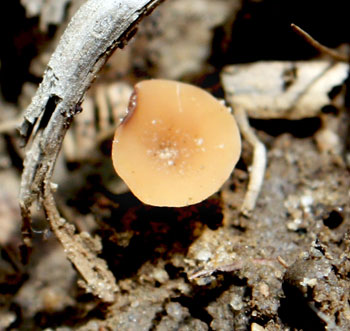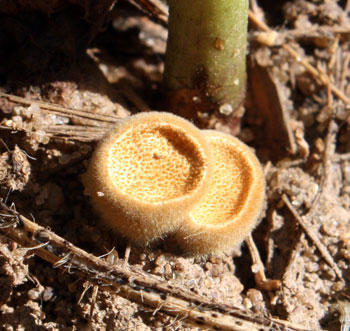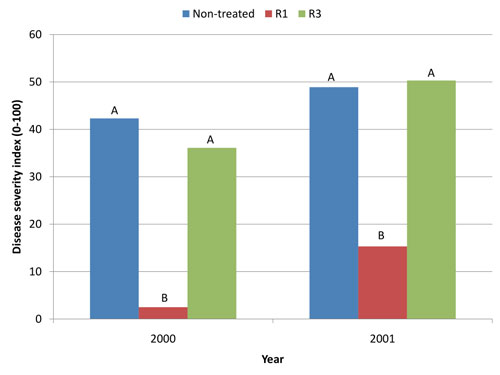By Martin Chilvers
With the wet conditions that we’ve been experiencing and the possibility of wet conditions during soybean flowering, now is the time to consider if a fungicide application should be made. Over the next few weeks, sclerotia of the white mold fungus (Sclerotinia sclerotiorum) will be germinating to produce 1/4-inch mushrooms (apothecia). These mushrooms release hundreds of thousands of spores which are capable of infecting the soybean plant through the flower petals. Michigan State University Extension notes that there are many other fungal species which produce mushrooms which are often confused with the white mold mushroom, especially the bird’s nest fungus, which is a harmless organism that breaks down corn stubble and other organic debris.

|

|
|
Left, White mold mushroom. Right, The common and harmless bird’s nest fungus, not to be confused with the white mold mushroom.
|
|
Before making that fungicide application, there are a few things to consider. Has there been a history of white mold in the field in question? How susceptible is the variety that you planted? Do you have high plant populations or narrow rows? All of these things can influence the amount of disease that develops.
Be realistic about the control that will be achieved with foliar fungicides; complete control is unrealistic. In various university spray trials, white mold was reduced from 0% to 60%. Once disease symptoms are present in a crop, it is too late to save infected plants. If fungicides are to be used they should be applied at the beginning of flowering (R1) with a possible follow up application a week or two later. Research shows that fungicide applications at beginning of flowering provide a higher level of control than those made at beginning of pod development. As the disease cycle is dependent on infection through flower petals, it is essential to get fungicide on to protect flowers; this includes correct timing as well as good penetration of fungicide product deep into the foliage.
The effect of thiophante methyl application timing on white mold disease incidence

If the decision to spray is made, it is advisable to keep replicated non-sprayed check strips in the field to see how the fungicide application performed under your conditions. It is important to have replicated strips and to place them in areas that are representative of the field. This is important, as low areas that hold moisture or where cool air pools will be at greater risk for developing disease than other areas of the field.
For more information, see “Management of white mold in soybean,” produced through the North Central Soybean Research Program. A more in-depth article can be found at the Entomological Society of America.






Post a comment
Report Abusive Comment